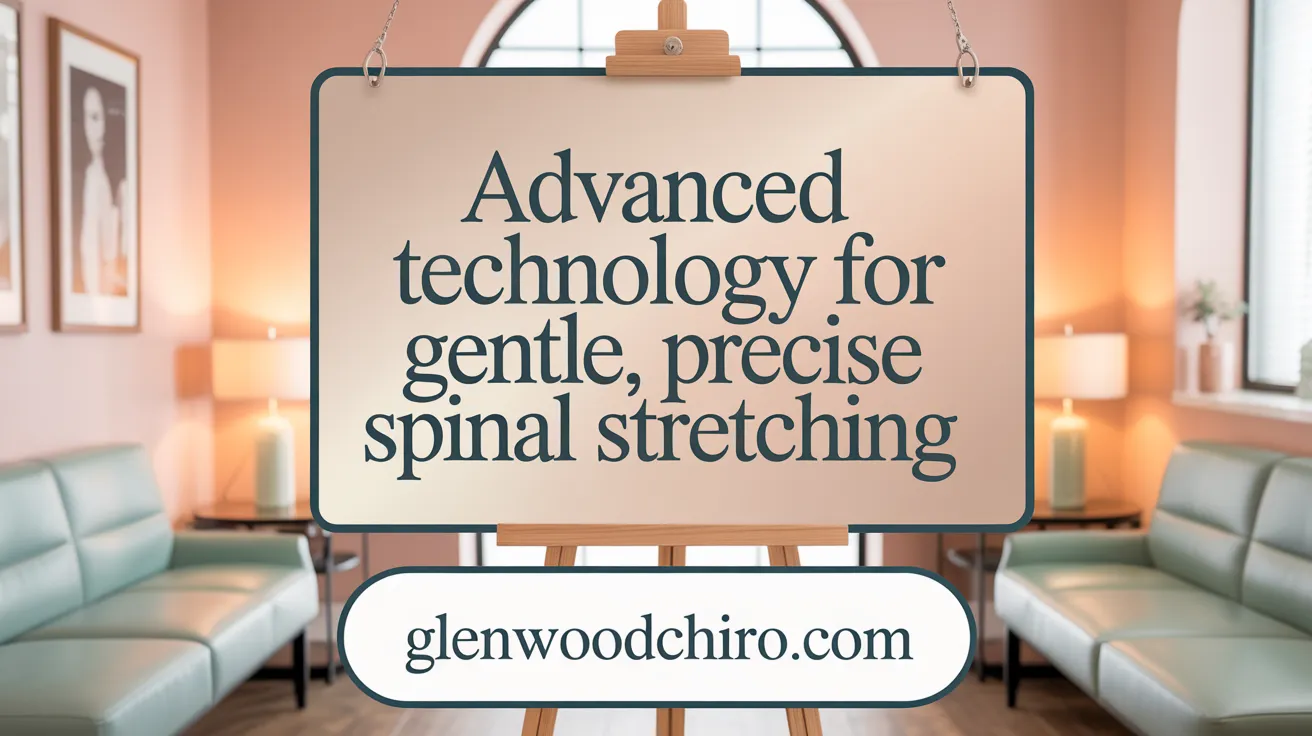A Modern Approach to Alleviating Spine-Related Pain
Spinal pain stemming from disc herniation, nerve compression, and degenerative conditions has long challenged patients and healthcare providers alike. Advances in non-invasive treatment options offer hope for many who seek relief without the risks of surgery. Among these, spinal decompression therapy has emerged as a notable technique, combining technology with gentle, targeted spinal traction to reduce pain and promote healing. This article delves into the mechanisms, benefits, indications, safety, and scientific evidence surrounding spinal decompression to provide a comprehensive understanding for those exploring non-surgical solutions to back and neck pain.
What is Spinal Decompression Therapy and How Does It Work?
Definition of spinal decompression therapy
Spinal decompression therapy is a non-invasive treatment designed to alleviate back pain caused by various spinal disc issues. It involves gently stretching the spine using specialized equipment or manual techniques to reduce pressure on discs and nerve roots. The goal is to promote healing and restore mobility without surgery.
How the therapy creates negative pressure to relieve nerve compression
The therapy works by creating negative pressure within the affected discs. During a treatment session, the patient lies comfortably on a motorized decompression table, which applies controlled, gentle traction. This traction causes the discs to elongate slightly, lowering the internal pressure. The negative pressure helps retract herniated or bulging disc material, relieving nerve compression, and allowing fluids, oxygen, and nutrients to flow back into the discs—factors essential for healing.
Typical procedure and treatment protocol
A typical decompression therapy involves 12 to 20 sessions, each lasting about 30 to 45 minutes. Patients are fully clothed and are secured with harnesses around the pelvis and trunk. The process is personalized based on the individual's condition, with frequent monitoring and adjustments by the practitioner. Many patients experience relief after just a few sessions, and the therapy is generally comfortable, relaxing, and free from invasive procedures (learn more).
Conditions commonly treated with spinal decompression
This therapy is effective in managing conditions such as herniated discs, bulging discs, degenerative disc disease, sciatica, spinal stenosis, and facet joint syndrome. It is especially helpful when symptoms include nerve pain, numbness, tingling, or weakness in the limbs. It is also used post-surgically as part of rehabilitation.
Non-invasive nature of the therapy
Being entirely non-invasive, spinal decompression does not involve incisions, anesthesia, or hospitalization. It offers a safe alternative to surgical procedures, with minimal risks such as mild soreness or discomfort (safety and risks). This makes it suitable for many patients, including those who prefer to avoid surgery or have medical conditions that make operative procedures risky.
Role as an alternative to surgery
Spinal decompression therapy often serves as a first-line treatment for many spinal conditions, aiming to reduce the need for surgical intervention. When effective, it can delay or eliminate the need for more invasive procedures like discectomy or spinal fusion, providing a less risky, cost-effective solution with a quick recovery time. However, in severe cases, surgery might still be necessary (overview of surgical options).
This therapy offers a promising approach by leveraging gentle mechanical traction to relieve nerve pressure, encourage disc repair, and improve patient quality of life.
Mechanisms and Principles Behind Spinal Decompression Techniques
 Spinal decompression techniques are based on the fundamental principle of using mechanical traction to create negative pressure within the affected intervertebral discs. This is often achieved through specially designed tables that gently stretch the spine, applying controlled forces. Modern systems incorporate computerized controls and sensor-driven technology, allowing precise adjustments tailored to each patient's condition and tolerance levels.
Spinal decompression techniques are based on the fundamental principle of using mechanical traction to create negative pressure within the affected intervertebral discs. This is often achieved through specially designed tables that gently stretch the spine, applying controlled forces. Modern systems incorporate computerized controls and sensor-driven technology, allowing precise adjustments tailored to each patient's condition and tolerance levels.
This controlled, gentle pulling causes a reduction in internal disc pressure, which encourages the retraction or re-positioning of herniated or bulging disc material. As the disc material retracts, pressure on the surrounding nerves is alleviated, helping to decrease pain, numbness, and tingling associated with nerve compression.
Another critical aspect of how spinal decompression works involves enhancing circulation and nutrient flow to the damaged discs and spinal tissues. Creating negative pressure within the disc space facilitates the influx of water, oxygen, and vital nutrients, which are essential for tissue repair and biological healing.
This increase in fluid exchange promotes the regeneration of disc tissue and alleviates inflammation, expediting recovery. Such biological processes are integral to the therapy's long-term benefits, as they help restore the natural function and structure of the spine.
Furthermore, the use of advanced digital technology and sensors ensures high levels of precision during treatment. Sensors detect muscle resistance and patient responses, enabling the system to adapt in real-time. This ensures that the decompression is both effective and safe, minimizing risks and optimizing outcomes.
In summary, spinal decompression techniques operate through a combination of mechanical distraction, biological enhancement, and technological precision. These principles work together to decompress neural elements, promote healing, and restore spinal health, making it a promising option for conditions like herniated discs, degenerative disc disease, and sciatica.
Conditions Treated and Benefits of Non-Invasive Spinal Decompression
 Non-invasive spinal decompression therapy can effectively address several spinal conditions caused by nerve compression and disc problems. Commonly treated issues include herniated or bulging discs, degenerative disc disease, spinal stenosis, and radiculopathy. The therapy gently stretches the spine using specialized equipment, creating negative pressure within the discs. This process helps retract slipped or bulging disc material, relieving pressure on nearby nerves and reducing associated symptoms like pain, numbness, and sciatica.
Non-invasive spinal decompression therapy can effectively address several spinal conditions caused by nerve compression and disc problems. Commonly treated issues include herniated or bulging discs, degenerative disc disease, spinal stenosis, and radiculopathy. The therapy gently stretches the spine using specialized equipment, creating negative pressure within the discs. This process helps retract slipped or bulging disc material, relieving pressure on nearby nerves and reducing associated symptoms like pain, numbness, and sciatica.
One of the primary benefits of this treatment is rapid symptom relief. Many patients report decreased back or neck pain and improved mobility after just a few sessions. It also promotes natural healing by facilitating better flow of water, oxygen, and nutrients into damaged discs, which supports tissue repair and reduces inflammation.
Another significant advantage is its potential to prevent or delay the need for invasive surgery. Since it is non-invasive and drug-free, patients can often avoid procedures like discectomy or laminectomy, which involve significant recovery times and risks. Instead, decompression offers a safer alternative, especially for those seeking to restore spinal function without surgery.
Furthermore, therapy can improve spinal alignment and overall function, helping to restore normal movement patterns, decrease reliance on medication, and enhance quality of life. Patients that are suitable candidates typically include those with moderate disc or nerve issues but should undergo thorough evaluation to ensure the therapy’s appropriateness.
Although promising, it is important to note that the scientific support for non-invasive decompression remains limited. Research includes small studies and anecdotal reports, and many published studies have methodological limitations, biases, or conflicting results. Consequently, while many individuals experience tangible benefits, the therapy’s overall efficacy compared to other conservative treatments like physical therapy or medication is still under investigation.
In summary, non-invasive spinal decompression can be a helpful, minimally invasive option for managing certain back and neck conditions. It offers the advantage of being safe, drug-free, and outpatient, but patients should consult healthcare providers to evaluate suitability and explore the most appropriate treatment strategies based on individual conditions.
Non-Surgical Spinal Decompression Procedure and Technology
 Non-surgical spinal decompression is a modern, sophisticated therapy designed to relieve back and neck pain caused by conditions like herniated or bulging discs, sciatica, and spinal stenosis. The core of this treatment involves specialized motorized traction tables equipped with harness systems. During each session, the patient is fully clothed and fitted into harnesses that are securely placed around the pelvis and trunk. These harnesses are connected to a computer-controlled table that gently and precisely stretches the spine.
Non-surgical spinal decompression is a modern, sophisticated therapy designed to relieve back and neck pain caused by conditions like herniated or bulging discs, sciatica, and spinal stenosis. The core of this treatment involves specialized motorized traction tables equipped with harness systems. During each session, the patient is fully clothed and fitted into harnesses that are securely placed around the pelvis and trunk. These harnesses are connected to a computer-controlled table that gently and precisely stretches the spine.
A crucial feature of the therapy is the use of computer-controlled adjustments. These systems regulate the amount of force, the angle of traction, and the rate at which the spine is stretched. Advanced units include feedback sensors that monitor muscle resistance, ensuring that the traction is applied safely and effectively. When resistance or muscle guarding is detected, the system can automatically adjust the pressure to maintain a steady, safe stretch. This dynamic regulation enhances safety and allows the therapy to be customized to each patient's response (see DOC spinal decompression system).
Typical treatment sessions last about 30 to 45 minutes, and patients usually undergo a series of multiple sessions—often between 12 and 28—spread over several weeks. The treatment protocol is tailored based on individual diagnosis and response, with the goal of creating a negative pressure within the discs. This negative pressure helps retract herniated or bulging discs, reducing pressure on nearby nerves and tissues. Many patients experience relief from pain and improved mobility after completing the series of treatments (learn more about treatment duration and protocols).
Spinal decompression therapy is often integrated with other therapeutic modalities such as chiropractic care, physical therapy, or exercise programs to maximize its benefits. While the evidence for its efficacy varies (scientific evidence and limitations), devices such as the DRX9000 and DOC systems are among the most well-known in clinical practice. These systems utilize a combination of multi-axis traction, computer algorithms, and real-time sensors to optimize treatment outcomes. Despite the scientific debate regarding its effectiveness, many clinicians and patients prefer this non-invasive approach for managing disc-related back and neck pain.
Safety Considerations and Risks of Spinal Decompression Therapy
 Spinal decompression therapy is generally considered safe when administered by trained healthcare professionals and in carefully selected patients. Mild side effects are common and usually limited to temporary soreness, muscle spasms, or a sensation of stretching discomfort following treatment sessions. These symptoms are comparable to what one might experience after physical exercise and typically resolve quickly.
Spinal decompression therapy is generally considered safe when administered by trained healthcare professionals and in carefully selected patients. Mild side effects are common and usually limited to temporary soreness, muscle spasms, or a sensation of stretching discomfort following treatment sessions. These symptoms are comparable to what one might experience after physical exercise and typically resolve quickly.
However, certain contraindications must be carefully evaluated to prevent serious complications. Individuals who are pregnant , suffer from severe osteoporosis, spinal fractures, tumors, infections, or significant spinal instability should avoid this therapy unless explicitly approved by their healthcare provider. Patients with implanted metal devices, vascular issues, or advanced degenerative conditions need thorough assessment before proceeding.
While serious adverse events are rare, they can occur if contraindications are overlooked. Potential risks include nerve injury, worsening of symptoms, or tissue damage. Proper screening—including medical history review, physical examination, and diagnostic imaging—is essential to identify at-risk individuals.
The importance of professional assessment and continuous monitoring during therapy cannot be overstated. Routine evaluation ensures that the treatment remains safe, effective, and tailored to the patient’s specific condition. Overall, when properly performed, spinal decompression offers benefits with minimal risk, making it a valuable option for managing back pain caused by disc herniations and nerve compression.
Surgical vs Non-Surgical Spinal Decompression: Key Differences and Indications

What are the differences between surgical and non-surgical spinal decompression treatments?
Surgical spinal decompression involves invasive procedures such as laminectomy, discectomy, and spinal fusion. These surgeries physically remove or bypass the structures compressing nerves, like parts of the vertebral bone, herniated discs, or bony growths, to alleviate pressure. They are typically performed under general anesthesia and require hospital stays, with longer recovery periods that can range from several weeks to months. Surgical options carry higher risks, including infection, bleeding, nerve damage, and spinal instability. For more information on surgical spinal decompression risks and procedures, see here.
In contrast, non-surgical spinal decompression uses specialized, FDA-cleared mechanical devices to gently stretch the spine through computer-controlled intermittent tension. This process creates a vacuum effect within the discs, promoting retraction of herniated or bulging material, rehydrating discs, and reducing nerve pressure—all without incisions or anesthesia. It is a safe, pain-free, and reversible treatment, often performed in outpatient clinics. Learn about non-surgical spinal decompression therapy here and here.
Risks, recovery times, and invasiveness of surgical options
Surgical decompression carries inherent risks such as infection, blood clots, nerve injury, and hardware failure if fusion is involved. Recovery can take several weeks to months, with some restrictions on activity while tissues heal and stabilization occurs. Detailed information about surgical spinal decompression risks and recovery can be found here.
Non-surgical decompression, on the other hand, involves minimal risks—mostly mild soreness or muscle spasms—and typically requires no downtime. Patients often resume normal activities immediately after sessions. For insights on non-invasive spinal decompression safety and benefits, see this comprehensive guide.
Suitability and indications for each treatment type
Surgical decompression is usually reserved for severe cases, such as significant spinal instability, severe herniation with neurological deficits, or when conservative treatments have failed. It may be indicated in conditions like advanced spinal stenosis causing nerve root or spinal cord compression. More about indications and surgical procedures is available here.
Non-surgical decompression suits patients with herniated discs, degenerative disc disease, sciatica, or mild to moderate spinal stenosis. It is recommended for those who prefer a less invasive option or are not candidates for surgery due to health issues. Learn more about indications for non-surgical therapy in this article.
Success rates and limitations of both approaches
Surgical treatments generally have high success rates in relieving pain and restoring function, with approximately 60-70% of patients reporting significant improvement. However, some issues may persist or recur. Information on success rates and outcomes of surgical spinal decompression is reviewed here.
Non-surgical decompression has shown promising outcomes in small studies, with reports of pain reduction and improved mobility. Nonetheless, scientific evidence supporting its efficacy is limited due to small sample sizes and methodological concerns, and it may not be effective for all cases. For a critical review of non-surgical spinal decompression research and evidence, see this PMC article and clinical outcomes study.
In summary, while non-surgical spinal decompression offers a safe, conservative alternative with fewer risks and shorter recovery times, surgical intervention remains a vital option for severe cases or when other treatments have not succeeded. The choice depends on individual conditions, severity of symptoms, and overall health, making consultation with a qualified healthcare provider essential. Additional resources on both treatment types and patient guidance can be found here and here.
Scientific Evidence and Resources on Spinal Decompression Therapy
What scientific evidence supports the claims of spinal decompression therapy?
Current research indicates some supportive evidence, though it is limited in scope and quality. Several clinical studies and MRI-based analyses have demonstrated noteworthy results. For example, studies have shown significant reductions in herniated disc size—up to 77% in some cases—and improvements in disc height and spinal canal dimensions. These physical changes have correlated with considerable pain relief, with patient-reported improvements reaching as high as 80%. A notable randomized controlled trial found a 27.6% decrease in herniation index in patients undergoing decompression, accompanied by symptom alleviation. Such findings suggest that spinal decompression therapy can be an effective conservative management option for specific spinal conditions. However, many studies face methodological limitations, including small sample sizes, lack of appropriate control groups, and bias, which call for cautious interpretation. Overall, scientific evidence from peer-reviewed journals supports the potential benefits of spinal decompression therapy, but further rigorous research is necessary for conclusive validation. For a comprehensive scientific review, see the PMC article on spinal decompression studies.
Where can individuals find educational resources on spinal health and decompression treatment options?
For those interested in learning more about spinal health and treatment options like decompression therapies, reputable sources include organizations such as the American Academy of Orthopaedic Surgeons (AAOS), the National Spine Health Foundation, and the American Chiropractic Association. These institutions offer comprehensive guides, articles, and patient education materials that are evidence-based and regularly updated. Dedicated platforms like Spine-Health also provide in-depth information, videos, and resources for patients and practitioners.
Attending seminars, webinars, or educational workshops led by licensed healthcare professionals—such as chiropractors, physical therapists, and spine specialists—can offer personalized insights and clarify treatment approaches. Consulting qualified clinicians helps ensure that individuals receive tailored advice suited to their specific condition. Using trusted online resources and professional consultation promotes informed decision-making and safe management of spinal issues.
Spinal Decompression: A Viable Non-Invasive Option for Many
Spinal decompression therapy represents an innovative, non-invasive approach for individuals seeking relief from common spinal conditions such as herniated discs, spinal stenosis, and nerve compression. Utilizing gentle, controlled traction to create negative pressure within spinal discs, this therapy aims to alleviate pain, promote healing, and restore mobility without the risks and downtime associated with surgery. While scientific evidence supporting its effectiveness is promising yet limited, the advantages of non-surgical decompression include safety, reduced recovery time, and a drug-free alternative. Patients considering this treatment should undergo thorough evaluation to determine suitability and ensure optimal outcomes. For many, spinal decompression offers a pathway to improved quality of life, reduced discomfort, and the ability to return to everyday activities with greater ease and comfort.
